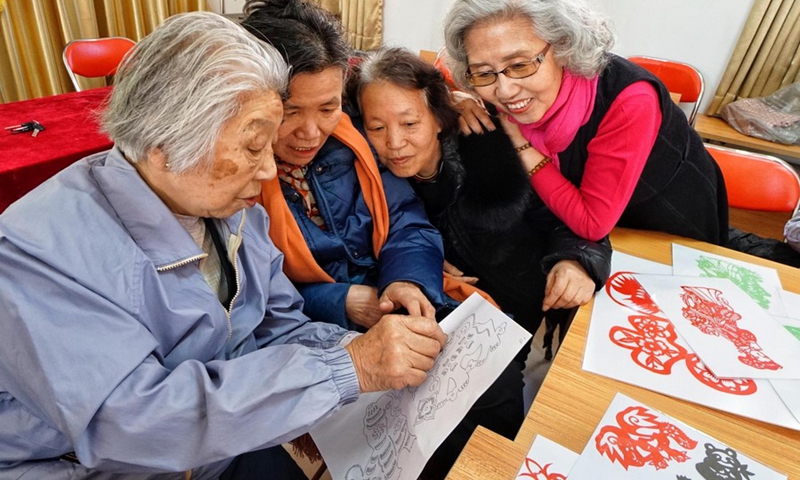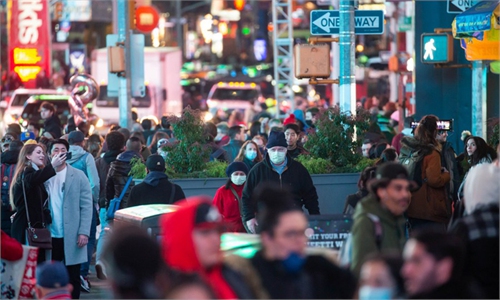
Elderly women attend a paper-cutting workshop organized by a local community in Fengtai District of Beijing, capital of China, March 8, 2018. Photo: Xinhua
The average life expectancy of Chinese citizens rose to 77.3 years in 2019, and it is expected that the data will keep growing in 2020. Meanwhile, life expectancy in the US fell to 77 years in 2020, dropping by 1.8 years compared to that of 2019.The average life expectancy is related to death rates of all ages in the statistical year. Therefore, the life expectancy will for sure see a rise as long as the number of senior citizens increases and their death rate decreases.
In 1980, life expectancy in China was 66.84 years and 73.61 years in the US. Recent censuses in China have shown that there is a significant decline in death rates of the whole population and particularly, the elderly population. As a result, China's average life expectancy has risen significantly. Behind the rise are the progress and development of all aspects of our country, including healthcare, nutrition as well as different types of security.
As for the US, the COVID-19 epidemic must have played its role in the rise of death rates in 2020. According to a study from the US Centers for Disease Control and Prevention in March, the novel coronavirus was the third leading cause of death in the country in 2020, behind heart disease and cancer.
Apart from deaths caused directly by the pandemic itself, the US in 2020 also saw huge increases in death rates for heart disease, diabetes, and some other common killers. This is because of the far-reaching impact of the COVID-19: Medical resources were mainly used on the treatment of COVID-19 patients, resulting in those with other diseases or a medical emergency could not receive the medical help they needed.
The impact of the COVID-19 epidemic once again emphasizes the perception that elders are the most vulnerable in society. Facing the novel coronavirus, senior citizens are more likely to have respiratory or chronic diseases and a weaker immune system compared to the younger generations.
On the contrary, China's prevention and control measures against the COVID-19 have generally managed to maintain a very low infection rate and the lowest possible number of deaths in the country. This has ensured that the novel coronavirus has not led to the growth of the death rate since the beginning of 2020. Strict anti-epidemic measures in China are actually meant to give the greatest protection to the most vulnerable groups, such as the elderly, children, and people with chronic diseases. This has minimized the impact of COVID-19 on our death rates and average life expectancy.
In fact, protecting the most vulnerable groups is a manifestation of social justice. China has always been very concerned about vulnerable senior citizens. Over the years, the country's policies in healthcare, pensions, and social security have always been tilted toward the elderly. This has guaranteed the improvement of life quality of senior citizens in China. Moreover, it has also greatly improved the survival rate of the elderly population and reduced its death rate in the face of the novel coronavirus. We can definitely see the life expectancy of the Chinese people continue to rise in the future. This is the confidence gained with the advantages of our system.
The author is an associate professor at the University of the Chinese Academy of Sciences. opinion@globaltimes.com.cn

